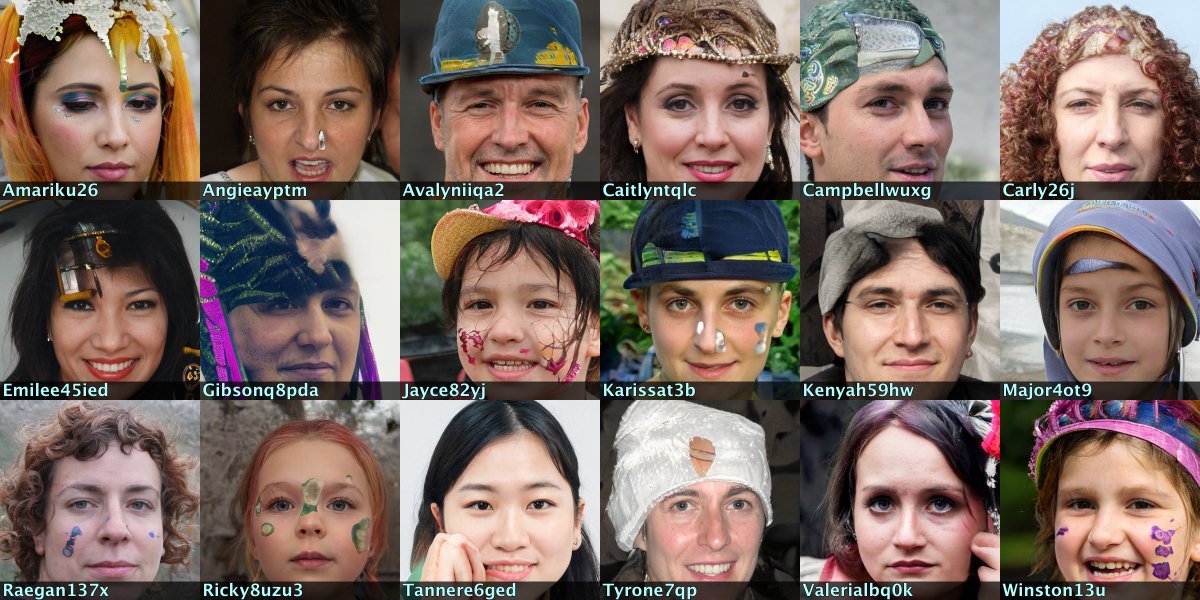Meet @Fernandozi2u, @Itzel2xqry, @Jenniferypvw, @Jensen3eigi, @Maximpxh, and @Raelynq1uo, six accounts with GAN-generated profile pics and identical biographies created in May 2021. #SundayShenaniGANs
cc: @ZellaQuixote
cc: @ZellaQuixote

The aforementioned six accounts are part of an astroturf botnet consisting of 2841 similarly-named Twitter accounts with repetitive biographies created in May 2021. These accounts (allegedly) send all of their tweets via Twitter for iPhone. 







All 2841 accounts in this network use GAN-generated face pics as their profile images.
(GAN = "generative adversarial network", the AI technique used by thispersondoesnotexist.com and similar tools to generate fake face pics.)



(GAN = "generative adversarial network", the AI technique used by thispersondoesnotexist.com and similar tools to generate fake face pics.)




The facial features on GAN-generated face pics always appear in the same pixel position on the images. In an interesting twist, the pics used by this botnet have been shifted down and to the right, but since all were shifted by the same amount, the facial features line up anyway. 

Here's an animated visualization of the process of blending the 2841 GAN-generated pics, demonstrating the identical facial feature placement (particularly the eyes).
As is often to be the case with network consisting of large numbers of GAN-generated profile pics, some rather glitchy images have made their way into the dataset. These are some of the more entertaining examples. 

What does this botnet actually do? It mostly amplifies large cryptocurrency/blockchain accounts, via both retweets and quote tweets, with some retweets of news and sports tweets (and occasional other things) thrown in for good measure. 





In addition to retweeting large cryptocurrency accounts, this botnet also follows them en masse: 16 of the accounts the network amplifies are also followed by at least 90% of the bots in the network. 

H/T @EJGibney/@FakeDrSebaceous for the lead.
Typo in the title of the creation date chart - should say 2841 accounts, not 2843.
https://twitter.com/conspirator0/status/1406645025119817736
• • •
Missing some Tweet in this thread? You can try to
force a refresh































